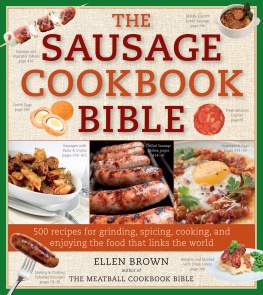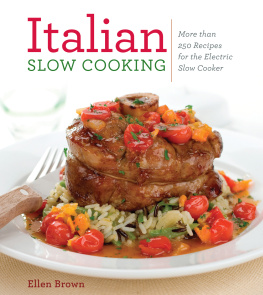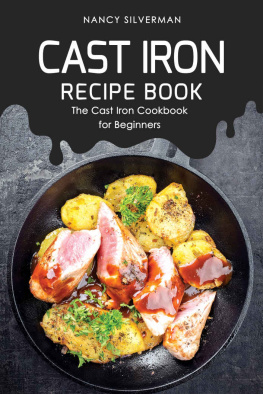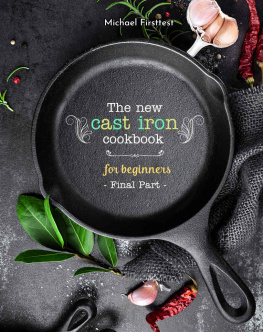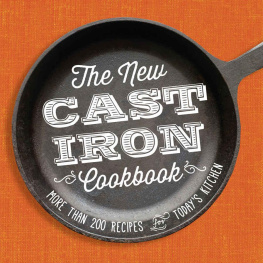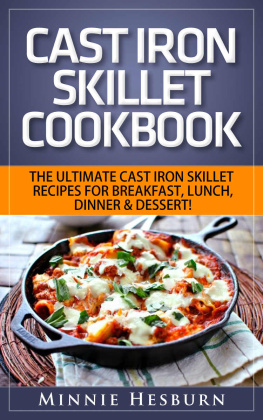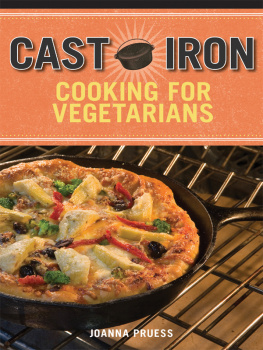STERLING EPICURE is a trademark of Sterling Publishing Co., Inc. The distinctive Sterling logo is a registered trademark of Sterling Publishing Co., Inc.
All rights reserved. No part of this publication may be reproduced, stored in a retrieval system, or transmitted in any form or by any means (including electronic, mechanical, photocopying, recording, or otherwise) without prior written
permission from the publisher.
Brown, Ellen.
preface
You dont really buy a cast iron skillet. You adopt it. It becomes a part of your family. Even when the children grow up and leave the house, the cast iron skillet remains.
Actually, if youre really lucky, you never had to buy a skillet at all. You inherited one from your mother or a dear aunt, and every time you cook with it youre adding to the rich culinary history of your pan. For example, my Thanksgiving breakfast sticky buns come from the same recipe that my grandmother used decades ago, and she most likely baked them in a cast iron skillet too.
A cast iron skillet is like a Swiss Army knifeit does everything, and everything well. I use my skillet almost every day. In fact, I use it at almost every meal. It goes from the stove to the oven to the table, eliminating the need for an ovenproof cooking pan and a serving dish. Plus, when its on the table it is keeping the food warmer for far longer than any serving dish would, so its taking the place of a heated tray.
If you are like me, as soon as the coffeepot is turned on in the morning, the skillet immediately goes into actionto fry up eggs for rushed midweek breakfasts or, for more relaxing weekend breakfasts, to griddle up some pancakes. In addition to being useful on top of the stove, my skillet often emerges from the oven holding aromatic cornbread with a crispy crust.
At lunch the cast iron skillet can fry up old-fashioned grilled cheese sandwiches or trendy panini with equally good results. Then, while were watching an afternoon football game, the skillet can be used to pop popcorn or fry quesadillas to nibble.
Then comes dinner, and again, the skillet can be used to cook anything from a dish that starts on top of the stove and finishes in the oven to a showstopping upside-down cake or loaf of soda bread to make the meal extra special.
Cast iron skillets are experiencing a rise in popularity in this century with good reason. As always, theyre versatile and reliable, they heat evenly, and theyre inexpensive relative to other metal cookware. But now, as more is known about the toxic chemicals released when artificial nonstick coatings are heated or scratched, cooks are turning to a safe cooking surface that, with very little effort, has always been totally nonstick. Not only are there no fumes to worry about from cast iron, but there are positive health benefits that come from cooking in it, too. For example, iron deficiency is a problem in many societies, and some iron is transferred into food cooked in a skillet and thereby into whoever enjoys that food.
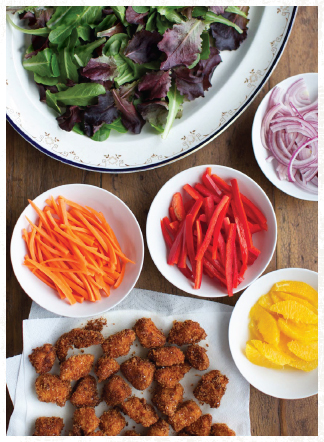
southern fried chicken salad
While the skillet hasnt changed in a century or more, the foods we cook in it have. Grandma used it to cook cornbread, and so do we, but I doubt she added
Parmesan cheese and sun-dried tomatoes to hers. She probably fried chicken in it too (past generations used a deep cast iron skillet for fried chicken so often they became known as chicken fryers), but today were more likely to fry nuggets of chicken to top a salad or to fry Vietnamese spring rolls (cha gio). In fact, a cast iron skillet is really much more effective for cooking now-popular Asian dishes than a wok because stoves in our culture do not produce flames that lap around the sides of the curved pan.
Youll find a wide range of recipes in this book. Some of them are updated versions of American classics that have been cooked in cast iron skillets for centuries. Others
are updated comfort food favorites from cuisines around the world. And then there are the new, innovative recipes that are easy to make but surely will surprise your family and friends.
While what we cook in this old friend has changed, the cast iron skillet remains the same. The old adage applieseverything old is new again.
Happy cooking!
Ellen Brown
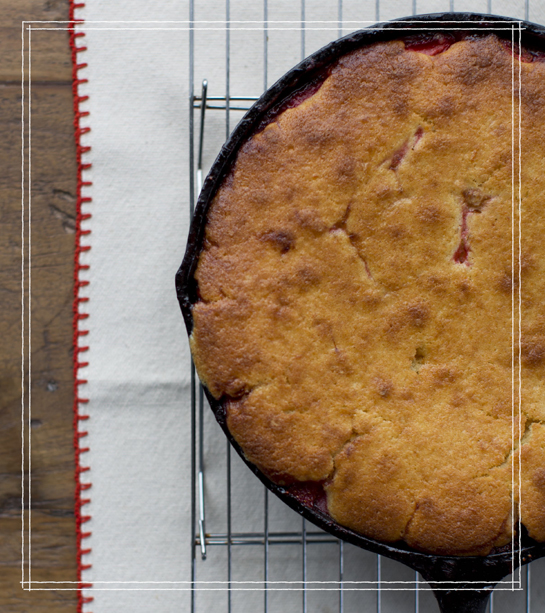
strawberry rhubarb cobbler
introduction
Until World War II, saying cast iron skillet was redundant. One just assumed that skillets were made from cast iron, and really only the French were partial to copper. The reality was that most people never even knew what a new skillet looked like, let alone owned one. They were happy to be using skillets handed down from their mothers and grandmothers. When someone needed a new cast iron pot, it was the blacksmiths who made it, a sideline to their primary work of making shoes for horses.
The first North American cast iron foundry was established back in 1619, and, with such a long history, we tend to think of cast iron as being strictly American. Not so. Its history really begins in China during the Han dynasty (206 BCE to 220 CE). Even the Europeans had us beat by a few hundred yearscast iron was made there as early as the fourteenth century. Cast iron was not the metal of choice for just cooking utensils; stoves were made from it, too. While the ancient Greeks were baking flatbreads in prototypes of what we call an oven today, the first recorded oven dates from Alsace in the late fifteenth century. All through the Renaissance inventors tinkered with improvements on wood-burning stoves, but it wasnt until just after the American Revolution that cast iron stoves were made in any significant quantity. It is hard to imagine, but before that time meals were cooked in fireplaces and hearths.



